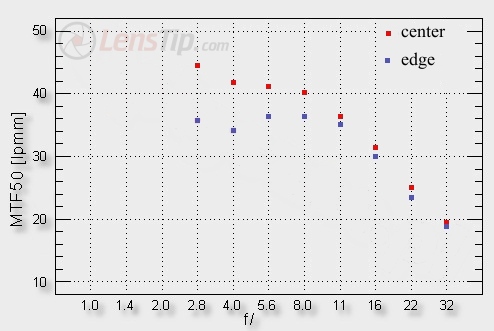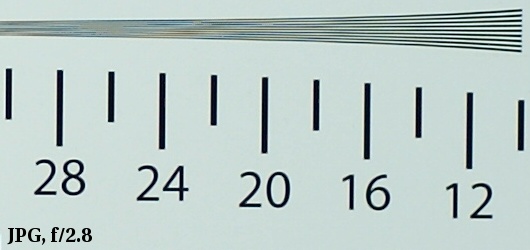Sony 50 mm f/2.8 Macro
4. Image resolution

The situation at the edge of the field is worse but only because you can hardly reach such high MTFs near borders as in the centre. The tested lens can’t be blamed for that, quite the opposite in fact, it deserves our praise.
Please Support UsIf you enjoy our reviews and articles, and you want us to continue our work please, support our website by donating through PayPal. The funds are going to be used for paying our editorial team, renting servers, and equipping our testing studio; only that way we will be able to continue providing you interesting content for free. |
- - - - - - - - - - - - - - - - - - - - - - - - - - - - - - - - - - - - - - - - - - - - - - - -
One thing that might stick out and also surprise a bit is slight fluctuation on the MTF50 graph near f/4.0. It is not an effect of a measurement error because that fluctuation was noticed in test charts of different sizes during two different test sessions. On the other hand we must state clearly that our measurement errors in the case of this test and for values, measured near the maximum relative aperture, amount to about 1.0-1.5 lpmm. Such an error is slight because it just reaches the level of 2-4%. It is, however, big enough to allow the measurements by f/2.8 and f/4.0 to overlap each other even if you implement the 1-sigma criterion. From the statistical point of view the fluctuation on the graph is insignificant. Fortunately from the practical point of view it is also negligible as both values, 42 and 44 lpmm, are still very high.
 |






